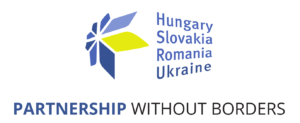The project “Carpathian Star Way” has entered the final stage of its implementation. On October 12-13, 2023, the concluding conference took place, attended by project partners from Slovakia, Ukraine, Hungary, all those who participated in the project’s realization, and those interested in the project’s theme. Overall, more than 40 participants attended the conference, held at the Cultural Center in Stakčín and at the Astronomical Observatory on Kolonica Saddle.

The main goal of the project is to maintain a minimum level of light pollution in dark sky parks in three neighboring countries – in the Dark Sky Park Poloniny in Slovakia, in the Zakarpattia Dark Sky Park in Ukraine, and in the Bükk Starry Sky Park in Hungary. The project’s main tasks included establishing stationary Light Pollution Measurement Stations (LPMS) in the territories of individual parks for continuous monitoring of light pollution levels. These stations were installed at the Astronomical Observatory on Kolonické Saddle and in the cadastre of the village Runina in Slovakia, in the cadastre of the village Stužica and at the observatory in Derenivka in Ukraine, and in the villages Kisgyőr and Repás Huta in Hungary. Their purpose is to systematically measure the level of pollution by technical light using special meters (SQM), which will be subsequently evaluated to determine the trend of increase in this part of the Carpathians.
Another important part of the project is the creation of informational centers within the park areas, which will serve to inform the public about the issues of light pollution, its impact on nature, human health, as well as the behavior of plants and animals. Such centers were built at the Astronomical Observatory on Kolonické Saddle in Slovakia, in the city of Velikyj Bereznyj and at the university in Uzhhorod in Ukraine, and in the village Kisgyőr in Hungary.
This topic is currently resonating strongly in society, and the European Union is already addressing this issue in new legislation.

The conference program mainly focused on balancing and presenting the achieved results by individual partners. Enrichment came from lectures by Mr. T. Slovinský on light pollution and its impact on the quality of astrophotography and Heliodor Macko on effective management of public lighting technology that helps reduce light pollution in communities. The presentation by Zoltán Koláth on a new methodology for acquiring data on light pollution and its processing and evaluation undoubtedly captured the attention of the attendees.
The most interesting part of the conference was the tour of the Research-Presentation Center of Dark Sky Parks in the Carpathians – the main investment of the project’s partner from Slovakia, the Vihorlat Observatory in Humenné, and the LPMS AO KOLS measurement station located in the area of the research-presentation center. This research-presentation center was built on Kolonica Saddle near the Astronomical Observatory on Kolonica Saddle. Like the atypical structure of a planetarium, this facility remained true to that tradition. The result of several activities within the cross-border cooperation project of the ENI program is this building, for which the Vihorlatská Observatory in Humenné received more than 270,000 EUR. This remarkable facility beneath the Vihorlat mountains will serve as a meeting place for those interested in the issues of light pollution and a healthy lifestyle.
The two-day concluding conference only confirmed that collaboration with partners from neighboring countries can bring interesting projects beneficial for all partners.



